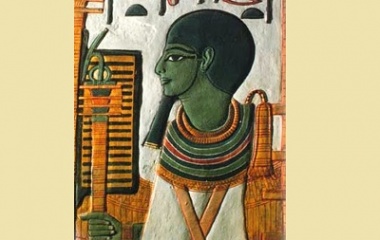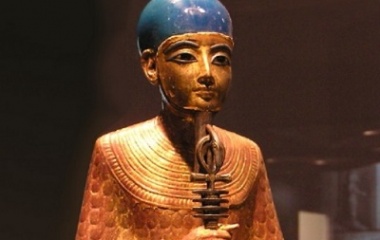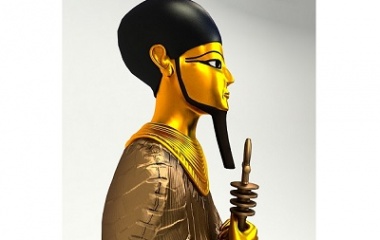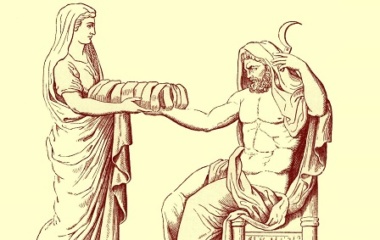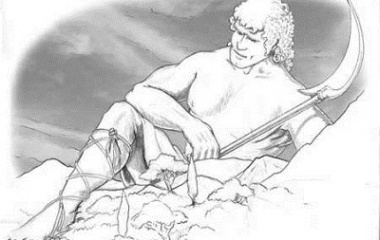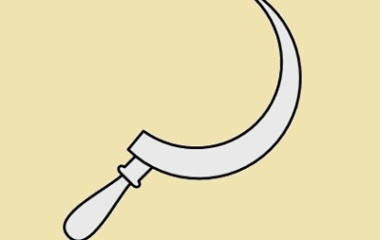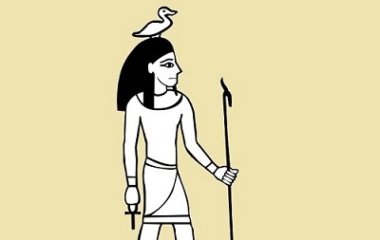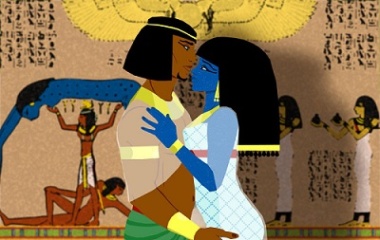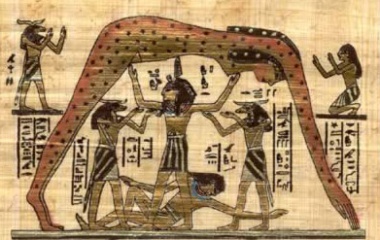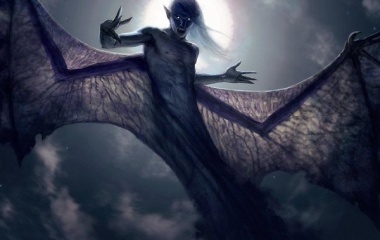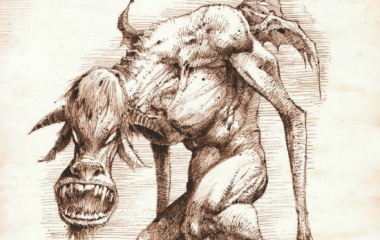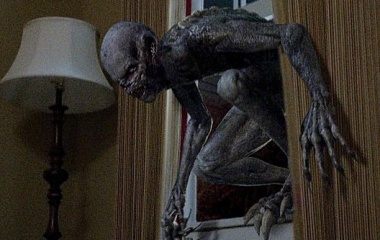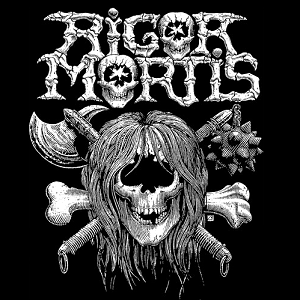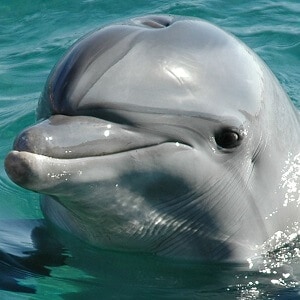Fast Facts:
- Pronunciation: Pi-tah
- Origin: Egypt
- Cult Center: Memphis
- Role: God of Creation, Fertility, Arts and Crafts
- Symbols: Sceptre, Djed, Ankh
- Wife: Sekhmet
- Children: Nefertum, Maahes, Imhotep
Who is Ptah?
To understand who Ptah was, we need to go all the way back to the beginning of Ancient Egyptian times, even before 3000 BC, because Ptah was the creator of the physical universe. You may think of him as an artisan, the demiurge and crafter of all things. Wonder how he did all of this creating? Well, known to be quite willful, he just had to think about it. That’s right – first he conceived the ideas, then felt them in his heart. Once he spoke the words, life and things were created.
In addition to being quite brilliant, he was also very handsome. Ptah, the handsome deity of creation. He is most often depicted wrapped up in cloth like a mummy, but his hands are left free to hold a staff. He had a shaved head and wore a skull cap. If you don’t think this sounds too attractive, please remember, fashions were different back then.
In addition to all the creating he had to do, Ptah was High Priest of his temple at Memphis, and held the esteemed title Great Leader of Craftsmen.
Origin
When the city of Memphis became the administrative capital of unified Egypt, the status of Ptah rose too. He was one of the most prominent gods of the time. Around 700 BC, a text called the Memphis Creation Myth was written. Of course it was written in Memphis, as the local citizens were interested in bringing their patron god of the city to the top of the god charts.
As the Memphis Creation Myth is told, Ptah was identified with the first bit of dry land to emerge from the endless depths of the waters. It is for this reason he is also known as a god of the earth.
Ptah created Atum, and all the other deities of the Ennead, a full set of nine deities called the “Great Ennead of Heliopolis”. They were Atum, Shu, Tefnut, Nut and Geb, Osiris, Isis, Set and Nephthys.
He thought about them; this was called, “divine knowledge”. He also spoke about them, which was called “divine utterance,” and voila! With “divine energy”, the 9 deities were created. In Ancient Egypt the cosmic order consisted of the natural order and the political order. The first five deities, Atum, Shu, Tefnut, Geb, and Nut, were the divine forces that created the elements of nature. Osiris, Isis, Seth, and Nephthys are correlated with political order, which was considered equally important at the time.
Family of Ptah
Similarly to cities of today, each city of Ancient Egypt had its own theories and own way of doing things. People took incredible pride in their deities. In Memphis, they claimed Ptah was married to Sekhmet, a local goddess, but elsewhere he was known as the husband of Wadjet. He was the father of Nefertum and Maahes, and Sekhmet was their mother. He also adopted Imhotep, the first known architect, engineer and physician in history, who was a human. Imhotep was given divine status after his death. Ptah had no parents; since he was the creator, he came first.
Sekhmet
Sekhmet is also one of the oldest and most powerful deities. She is a lioness, the daughter of the sun dod Ra, and is known as the goddess of the sun and war. She also represents destruction, plagues and healing. She was a protector of the pharaoh of Upper Egypt during war, and the patron goddess of healers.
Nefertum
The son of the lioness and the creator, Nefertum, was born from a blue lotus bud that was floating in the water at the very beginning of creation. He represents the sunrise, and it is said he created mankind from his tears.
Imhotep
A sage and chief minister of the court of Pharaoh Djoser, Imhotep officiated over the building of the Step Pyramid of Djoser. Also known as a major figure in Ancient Egyptian medicine, he was given the status of a deity thousands of years after his death.
Historical Influence
Ptah was one of the Triad of Memphis, along with his wife, Sekhmet and their son, Nefertum. When Memphis became the capital of Egypt, Ptah got ultimate creator status and was worshipped throughout all of Egypt. He was so popular it is believed by many that the name “Egypt” is derived from the Greek spelling of the temple in Memphis; “Hwt-kA-ptH”, “the temple of the Ka of Ptah“, or “House of the Soul of Ptah”.
The ruins of Memphis are located about 12 miles southwest of Cairo. Today, little remains of the old city that was the capital of Ancient Egypt and one of the most powerful cities in the world at that time.
Memphite theology was recorded on a granite slab, probably around 710 BC. It is based on the text of lost documents dating from approximately 2400 BC. The first inscription identifies Ptah.
Symbolic Influence
All of Memphite theology is based on Ptah. The creation process continued until everything in the world was created, and all the gods and goddesses that oversaw them; until everything came into being, in other words. This process extended beyond earth and life to the afterlife. Not only was Ptah a god of creation, but he was also the catalyst to a soul’s rebirth in the afterlife. In the Ancient Egyptian religion, the dead were believed to be reborn into an eternal life. A ritual called the Opening of the Mouth ceremony was initiated so the spirit would be able to eat and drink, ensuring its survival in the afterlife.
Images of Ptah are known to depict him contained wrapped like a mummy, holding a sceptre, and wearing a beard. These three symbols represent his three major influences: power, life and stability.
Ptah
